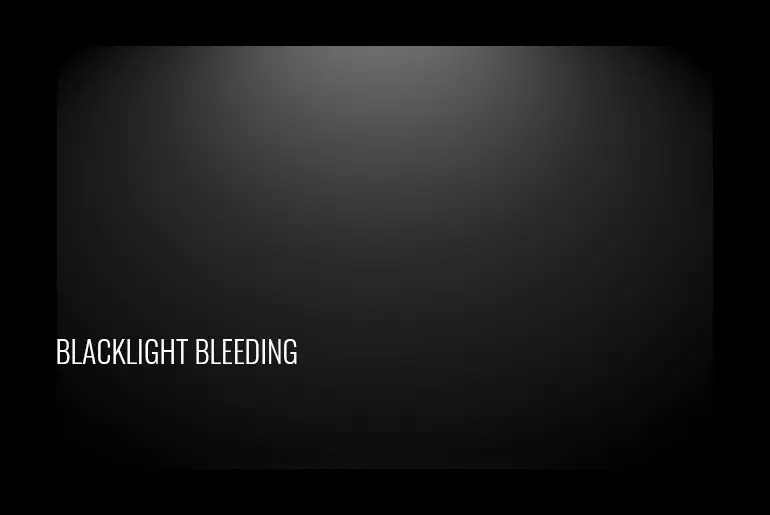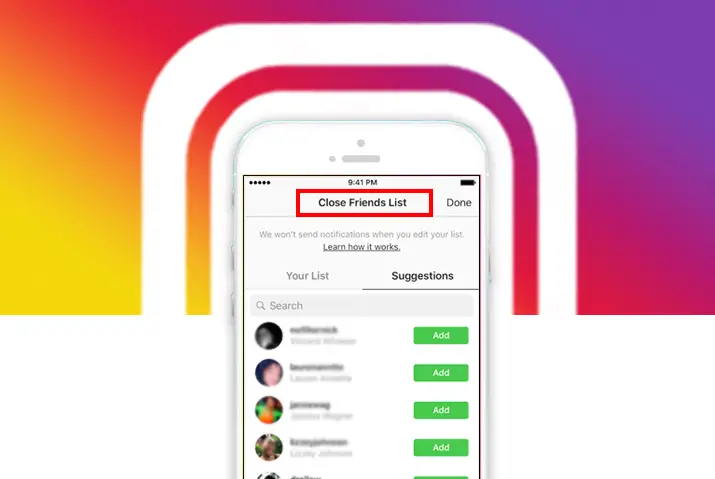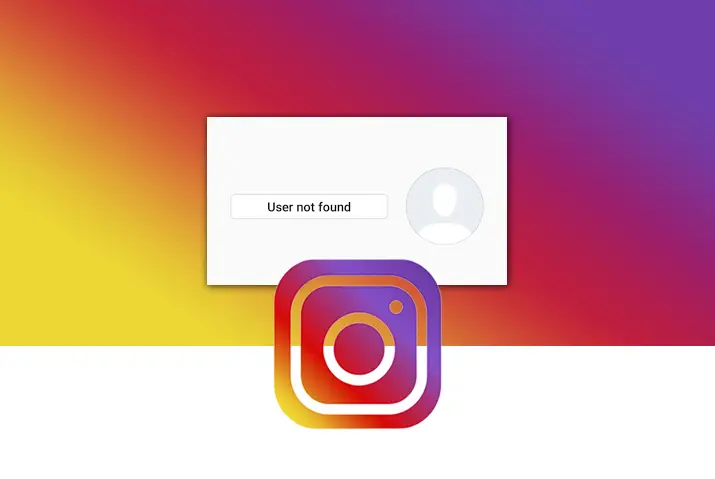Backlight bleeding is a common issue we see on LCD displays, whether it can be your TV, monitor, or even your mobile device. It depends on what activity or task you’re doing on your device and sometimes it could be very hard to tell if it’s a backlight bleed or not. It is most noticeable in a dark room where the only source of light is your screen panel. If you’re considering buying a new device with an LCD panel, you should definitely look into this common issue.
Blacklight bleeding commonly occurs only in LCD displays and a proper solution is to carefully adjust your screen frame to achieve the minimal effect. This issue is mostly manufactured based and is present on all LCD displays. For the most part, you cannot completely get rid of it but you can minimalize the effect.
What Is Backlight Bleeding?
Backlight bleed is defined as the leaking of the light around the edges of the panel. This issue is commonly seen in LCD panels and some of the LED panels as well. It is common for LCD panels because they have a dedicated backlight system that works differently than other panels.
This issue cannot be completely solved but we can reduce the effect to some extent. The way it works is that the display needs an LED backlight to emit the screen but when it doesn’t go through due to the bezels it causes them to bleed.
Backlight bleeding is not the same in all the devices and can differ accordingly. It can be so minimal that human eyes cannot detector extreme cases where the user cannot tolerate it. It doesn’t affect much, just disturb the viewing experience of the user especially during nighttime.
Causes Of Backlight Bleeding
- Deviation of alignment of screen layers
- The pressure inside the display
- Unbalanced screen frame or bezels
- Light being completely blocked in certain areas
- Manufacturing issue
Types Of Backlight Bleeding
Clouding
Clouding is a type of backlight where there are clouds like patches on the entire screen area. Instead of the edges, the entire screen forms patches which is even a bigger issue than backlight bleeding of the edges only. This is also much noticeable in a dark environment where the only light source is your screen.
Flashlighting
Flashlighting is smaller and less noticeable unlike clouding and is mostly found in the corners of the screen. This can be noticed on the edges of the screen as the edges light up brightly while the center screen is often dark. This issue can occur in a large form or even smaller ones. Flashlighting can be only seen in a dark environment with the screen being the only light source.
How To Avoid Backlight Bleeding
Though there aren’t feasible and permanent solutions to this problem. Any screen that uses an active backlight has such a problem. Most of the cases are unnoticeable and negligible but to completely get rid of it you should opt for an OLED panel which is more premium and more expensive but they are much better than LCD panels.
If you don’t want to spend much on expensive devices that use an OLED panel you must carefully look for LCD panels that have minimal backlight bleed issues and the one which you are comfortable with. Or, you can simply prevent this by not tapping and pressing hard on the screen and taking good care of it. If it is a touchscreen you can do nothing about it because once it occurs it’s difficult to avoid.
How To Test Backlight Bleeding
To test backlight bleeding you just need to go to a dark environment and turn all the lights off and just depend on your screen light. You can go to lightbleedtest.com and check your panel for free. If you’re seeing the patches on the edge of the screen your panel is facing backlight blessing issues. If this is the case let’s hop on to some temporary solutions that can be applied to fix it to some extent.
How To Fix Backlight Bleeding
Loosen The Frame Screws
The most common cause for the backlight bleeding is the tightening of the frame screws. This is caused because when you tighten the display frame the panel gets wrapped which causes the display to act weird and cause bleeding. To solve the issue of backlight bleeding just loosen the screws by holding the frame. Make sure not to over loosen the frame or the display might fall out.
This method only works when the display is too tightly attached or screwed to the panel so if this doesn’t work you might want to try the next method.
Cleaning The Spots
This method might seem weird at first but it might actually be the result of grease, dust, and liquid on the screen which causes it to bleed. To prevent such things from overtaking, take a micro fabric cloth and gently rub the affected areas in a round motion. Keep in mind that the pressure you put on the display might affect the panel so apply gentle pressure else the display might get damaged.
After doing this, leave the device for a day or two and see if there’s any good luck.
Twisting The Frame
Sometimes when the display isn’t fit properly you might want to twist it slightly to adjust it in order to make sure that no light is bleeding out of the screen. Mending it properly might solve the issue to some extent.
Monitor Your Progress
You might want to keep track of your progress because every step may slightly reduce the bleeding effect. By doing so, you will know what methods you’re applying to know what works for you. The best way to achieve this is by shutting all your lights down for a dark environment and opening a dark image and taking photos each day to monitor your progress. There are websites that can help you keep track of this process so you can solve the issue partially at least.
Apply Electrical Tape On The Edge
Now that we know that backlight bleeding is the light escaping from the edge of the screen, applying electrical tape on the edge of the screen to fix the frame is one common method of fixing the backlight bleeding. If the case is with the frame then this method is worth the try. This is also the case with faulty or loose frames of the screen.
Adjust Your Lighting
If none of the methods works which in some cases has the probability, the one way to unsee this issue is by adjusting the light. This basically means adapting to the brightness and making it less obvious for the bleed to be visually noticeable. If you notice this issue is high brightness, the best way is to dim the brightness to a level where you cannot see the bleeding edges.
IPS Glow Vs Backlight Bleeding
IPS glow and backlight bleed can be a pain in the head while purchasing a new monitor or a tv. It may seem that both these display issues are the same but both of them aren’t. IPS glow is when there are patches on the corners of the screen and is a technology-related issue that can never be completely eliminated. Whereas, backlight bleed is the leaking of light around the edges. This can be solved to some extent but cannot completely be solved.
IPS glow and backlight bleed aren’t the same. The IPS glow is dependent on how you view the screen on the panel frame mechanism and also ambient lights. You can lessen the effect of this by tuning up your brightness as it is less visible in a brighter environment. IPS glow is visible only in bright images or when looking at a particular angle.
Backlight bleed is slightly different, in backlight bleeding, it almost seems like there is a force applied to the screen which looks like a bright light leaking from the edges of the screen. Unlike the IPS glow it doesn’t matter at what distance you look at or the viewing angle. It is mostly caused due to the uneven distribution of the tightness of the frame.
Causes Of IPS Glow
The main reason for the IPS glow is in the manufacturing itself. It is already decided if the panel has come with a defect or not. A panel consists of various layers such as the inner panel housing or anti-glare coating which is prone to defects. Moreover, it is all in the manufacturing process of how well a panel is built because from the manufacturing itself it is clear that if the panel is acceptable or not, and is the bad or good panel.
FAQ’s
Do OLED Panels Have Backlight Bleeding?
OLED panels are manufactured differently than other panels. In an OLED panel, each pixel is individually lit and not backlit. So, there is no backlight issue in these panels. These panels can completely turn off their individual pixel when it comes to black or dark images. In LCD paned they turn dark grey instead of completely shutting down the pixels.
Can You Solve TheBacklight Bleeding Issue?
Backlight bleeding is just the backlight of the panel leaking from the edges of the screen. It’s no big issue but it can be reduced relatively but not completely removed.
Does The Backlight Bleed Spread Overtime?
Basically, the backlight bleed doesn’t spread overtime by itself unless you try to move the monitor time and often. It should not be a problem if you don’t move or adjust the monitor time and often.
Conclusion
Backlight bleed is certainly an issue for LCD users, but should you still consider buying them? The answer is yes because not everyone can purchase an alternative OLED monitor. Also, for comparison and day to day use LCD panels do well enough. This issue is also not visible to everyone and one can simply avoid or ignore it. To avoid your monitor having a backlight bleed, just check before buying and ask for replacement before the warranty goes out.





